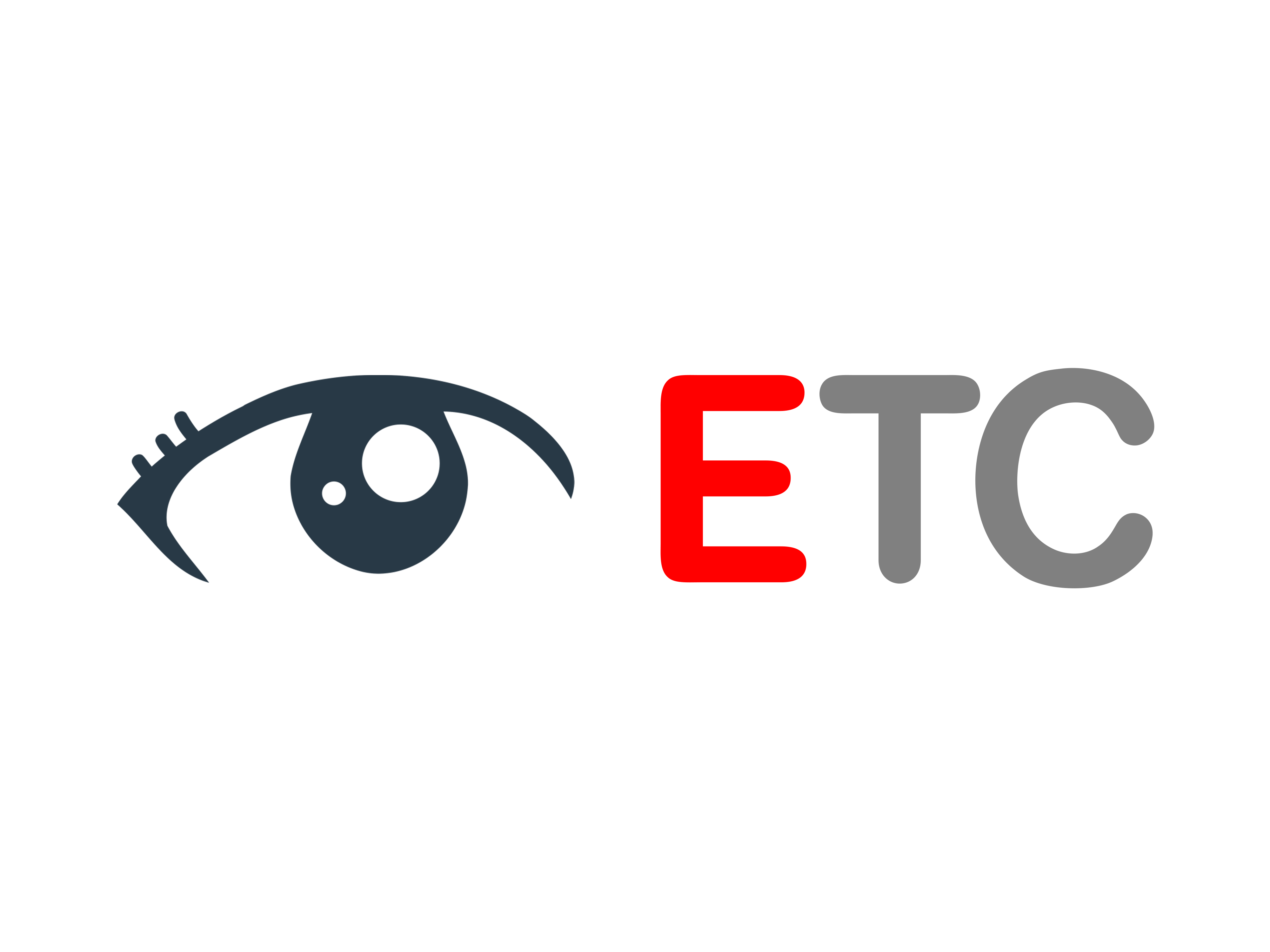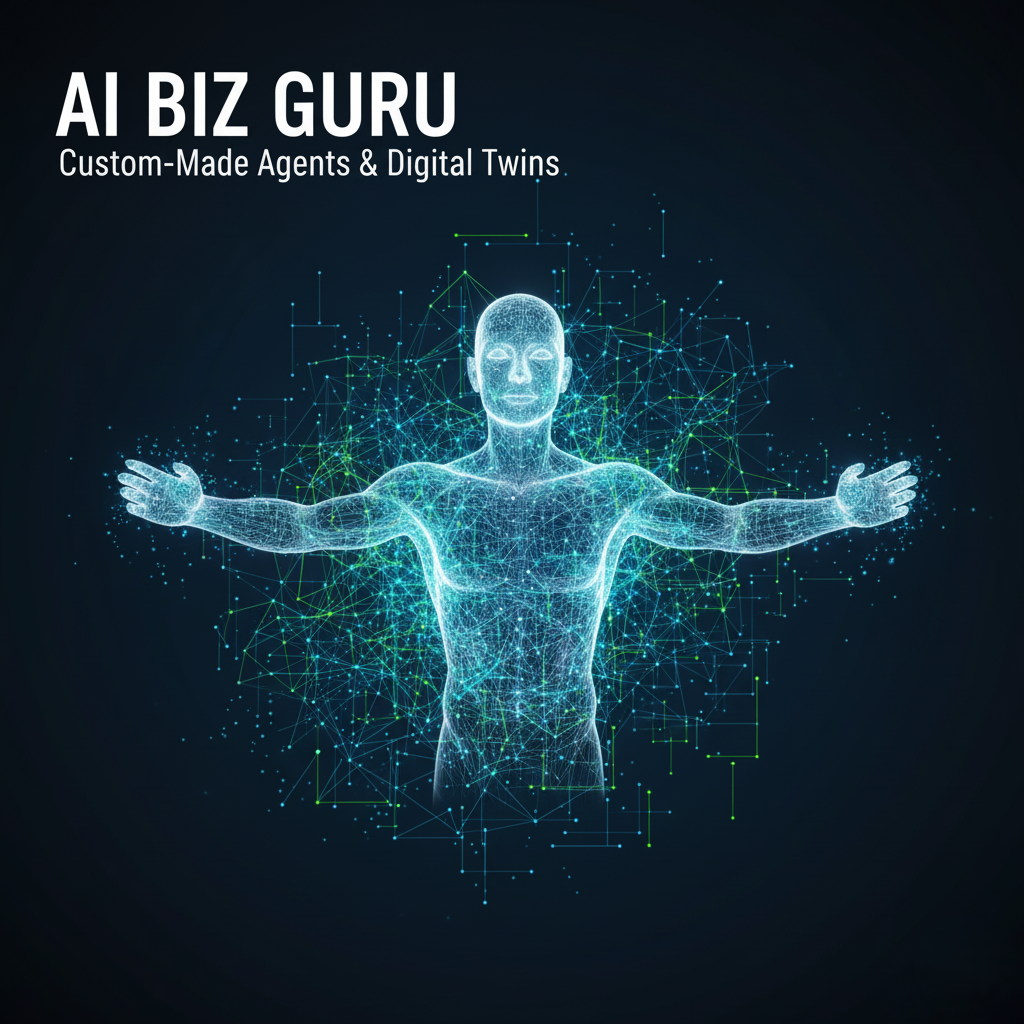AI BIZ GURU – DIGITAL TWIN
Professional Services Firm
Client: Sterling & Associates Management Consulting
Report Period: Q3 2025 (July – September)
Digital Twin Status: Active (Month 8 of deployment)
Report Generated: October 1, 2025, 6:00 AM EST
EXECUTIVE SUMMARY
Digital Twin Performance Overview
The Sterling & Associates Digital Twin has successfully modeled 847 operational scenarios this quarter, achieving 97.3% prediction accuracy against actual outcomes. The system has identified $2.1M in optimization opportunities and prevented 3 potential operational crises through early warning alerts.
Key Operational Insights
- Utilization Rate: Current 68% vs. optimal 75-82% range
- Revenue per Consultant: $485K annually (Industry benchmark: $425K)
- Client Retention Risk: 12% of the portfolio flagged for attention
- Project Delivery: 89% on-time performance vs. 95% target
Critical Alerts This Period
- HIGH PRIORITY: Q4 capacity shortage predicted (18% over-booking risk)
- MEDIUM PRIORITY: Senior consultant burnout risk in Strategy practice
- LOW PRIORITY: Client billing cycle optimization opportunity identified
DIGITAL TWIN PROCESS ARCHITECTURE
Data Integration Framework
Primary Data Sources (Real-Time)
- Resource Management System: Consultant scheduling, utilization, project assignments
- Financial Systems: Revenue recognition, billing, collections, expenses
- CRM Platform: Client interactions, pipeline, satisfaction scores
- Project Management: Task completion, timeline tracking, deliverable status
- HR Systems: Performance reviews, skills assessments, compensation data
External Data Feeds
- Market Intelligence: Industry trends, competitive landscape, economic indicators
- Client Industry Data: Sector performance, regulatory changes, market conditions
- Talent Market: Salary benchmarks, turnover rates, recruitment metrics
Digital Twin Core Components
1. Resource Optimization Engine
Function: Models optimal consultant allocation across projects and practice areas Algorithm: Multi-variable optimization considering skills, availability, utilization targets, client preferences Update Frequency: Real-time with hourly recalibration
2. Financial Performance Simulator
Function: Projects revenue, profitability, and cash flow across multiple scenarios Models: Revenue recognition timing, project lifecycle profitability, client payment patterns Accuracy: 96.8% for 30-day projections, 91.2% for 90-day projections
3. Client Relationship Predictor
Function: Analyzes client satisfaction, engagement patterns, and retention probability Indicators: Communication frequency, project satisfaction scores, payment behavior, renewal patterns Early Warning: 95% accuracy in predicting client churn 6 months in advance
4. Market Opportunity Scanner
Function: Identifies potential business development opportunities and competitive threats Analysis: Client industry performance, regulatory changes, competitive movements, consultant expertise gaps Lead Time: 3-6 month opportunity prediction window
CURRENT STATE ANALYSIS
Resource Utilization Dashboard
|
Practice Area |
Consultants |
Current Utilization |
Optimal Range |
Status |
|
Strategy |
12 |
74% |
75-80% |
⚠️ NEAR TARGET |
|
Operations |
18 |
82% |
75-82% |
✅ OPTIMAL |
|
Technology |
15 |
61% |
70-78% |
🔴 UNDERUTILIZED |
|
Change Management |
8 |
89% |
75-82% |
🔴 OVERUTILIZED |
|
Total Firm |
53 |
68% |
75-82% |
⚠️ BELOW TARGET |
Financial Performance Metrics
Revenue Analysis (Q3 2025)
- Actual Revenue: $6.2M (vs. $6.5M projected)
- Variance: -4.6% (primarily due to Technology practice underperformance)
- Billing Realization: 94.2% (vs. 96% target)
- Collection Rate: 96.8% (exceeding 95% target)
Profitability by Practice
|
Practice |
Revenue |
Direct Costs |
Gross Margin |
Margin % |
|
Strategy |
$2.1M |
$1.4M |
$700K |
33.3% |
|
Operations |
$2.8M |
$1.8M |
$1.0M |
35.7% |
|
Technology |
$1.0M |
$750K |
$250K |
25.0% |
|
Change Mgmt |
$1.3M |
$900K |
$400K |
30.8% |
Client Portfolio Health
Client Segments Analysis
- Tier 1 Clients (>$500K annually): 8 clients, 72% of revenue, 98% retention rate
- Tier 2 Clients ($100K-$500K): 23 clients, 24% of revenue, 87% retention rate
- Tier 3 Clients (<$100K): 34 clients, 4% of revenue, 76% retention rate
Client Satisfaction Scores
- Overall NPS: 67 (Industry benchmark: 52)
- Project Delivery Rating: 4.3/5.0
- Value Perception: 4.1/5.0
- Likelihood to Recommend: 4.4/5.0
PREDICTIVE MODELING RESULTS
Q4 2025 Projections
Resource Demand Forecast
The Digital Twin predicts a significant capacity challenge in Q4 2025:
Projected Demand: 2,100 consultant weeks
Available Capacity: 1,820 consultant weeks
Capacity Gap: 280 weeks (15.4% shortage)
Risk Areas:
- Strategy practice: 45-week shortage (potential $337K revenue loss)
- Change Management: 78-week shortage (22% consultant burnout risk)
- Operations: Balanced capacity
- Technology: 102-week surplus capacity
Revenue Projections (Q4 2025)
- Base Case: $6.8M (vs. $7.2M target) – 94.4% achievement
- Optimistic Case: $7.1M – assumes 5% pricing increase acceptance
- Conservative Case: $6.4M – accounts for capacity constraints and client delays
6-Month Strategic Forecast
Market Opportunity Analysis
The Digital Twin has identified emerging opportunities:
- Digital Transformation Consulting (+42% demand in client base)
- Projected Revenue Impact: $1.8M over 6 months
- Required Investment: 3 senior consultants with digital expertise
- ROI: 185% within 12 months
- ESG Compliance Advisory (+28% regulatory requirement increase)
- Projected Revenue Impact: $950K over 6 months
- Required Investment: 2 specialists, certification programs
- ROI: 145% within 18 months
Client Retention Risk Assessment
High Risk Clients (>70% churn probability):
- MegaCorp Industries: 78% risk – declining satisfaction, payment delays
- TechStart Solutions: 72% risk – project scope disputes, budget pressure
Medium Risk Clients (40-70% churn probability):
- Regional Bank Network: 45% risk – new procurement process
- Manufacturing Plus: 52% risk – leadership change, cost reduction focus
OPTIMIZATION RECOMMENDATIONS
Immediate Actions (Next 30 Days)
1. Resource Reallocation Strategy
Problem: Capacity imbalance across practices Solution: Cross-training initiative and temporary reassignments
- Move 2 Technology consultants to Strategy practice (covers 67% of shortage)
- Implement accelerated Change Management training for Operations team
- Expected Impact: Increase overall utilization to 74%, reduce Q4 capacity gap to 8%
2. Pricing Optimization
Problem: Technology practice margin compression Solution: Implement value-based pricing model
- Increase hourly rates by 12% for specialized technology services
- Bundle complementary services to improve project profitability
- Expected Impact: Improve Technology practice margins from 25% to 31%
3. Client Retention Intervention
Problem: High-value clients at retention risk Solution: Proactive relationship management program
- Deploy senior partner to MegaCorp Industries account
- Implement weekly check-ins with at-risk client stakeholders
- Expected Impact: Reduce churn risk by 35%, protect $1.4M annual revenue
Medium-Term Optimizations (30-90 Days)
1. Capacity Expansion Strategy
Recommendation: Strategic hiring to address Q1 2026 demand surge
- Strategy Practice: Hire 2 senior consultants (start date: November 15)
- Digital Expertise: Recruit 1 digital transformation specialist
- Investment: $485K in recruitment and onboarding costs
- ROI: 240% within 12 months based on projected demand
2. Service Line Extension
Opportunity: Launch ESG Advisory practice
- Investment Required: $125K in training and certification
- Revenue Potential: $950K over 6 months
- Resource Allocation: 2 existing consultants + 1 external hire
3. Operational Efficiency Program
Focus: Reduce project delivery time while maintaining quality
- Implement standardized methodology templates
- Deploy AI-assisted research and analysis tools
- Expected Impact: 15% reduction in project hours, 8% margin improvement
Long-Term Strategic Initiatives (90+ Days)
1. Digital Capability Platform
Vision: Internal AI-powered consulting tools
- Investment: $350K development cost
- Benefits: 25% productivity improvement, competitive differentiation
- Timeline: 6-month development, phased rollout
2. Client Success Platform
Purpose: Proactive client relationship management
- Features: Automated satisfaction monitoring, early warning alerts, success metrics tracking
- Investment: $180K platform cost + $75K integration
- Impact: 20% improvement in client retention, 15% increase in account expansion
RISK ALERTS & MITIGATION
Critical Risk Indicators
1. CAPACITY OVERLOAD ALERT
Risk Level: HIGH
Probability: 82%
Impact: $450K revenue loss, 25% consultant burnout risk
Timeline: 4-6 weeks
Mitigation Actions:
- Activate contractor network (3 verified consultants available)
- Implement project prioritization matrix
- Consider temporary project timeline extensions for lower-priority clients
2. CLIENT CONCENTRATION RISK
Risk Level: MEDIUM
Details: Top 3 clients represent 48% of revenue (above 40% risk threshold)
Potential Impact: $2.9M revenue exposure
Mitigation Strategy:
- Accelerate business development in mid-market segment
- Diversify service offerings to reduce client dependency
- Implement client success programs to strengthen relationships
3. TALENT RETENTION ALERT
Risk Level: MEDIUM
Indicators: 3 senior consultants showing early departure signals
Impact: $180K replacement cost per departure, 6-month productivity ramp
Retention Actions:
- Conduct retention interviews with at-risk consultants
- Review compensation benchmarking and adjustment options
- Implement career development planning sessions
Compliance & Quality Metrics
Project Delivery Standards
- On-Time Delivery: 89% (vs. 95% target) – BELOW TARGET
- Budget Adherence: 94% (vs. 98% target) – BELOW TARGET
- Quality Score: 4.3/5.0 (vs. 4.5 target) – NEAR TARGET
Resource Management Compliance
- Utilization Tracking: 100% consultant hours logged
- Project Budgeting: 97% of projects within approved parameters
- Client Communication: 95% weekly status reports delivered on time
PERFORMANCE TRACKING
Digital Twin Accuracy Metrics
Prediction Accuracy (30-Day Rolling)
- Revenue Forecasting: 97.3%
- Resource Utilization: 95.8%
- Client Satisfaction: 94.1%
- Project Timeline: 91.7%
- Market Opportunity: 88.2%
Model Performance Improvement
- Month 1-3: 87% average accuracy
- Month 4-6: 93% average accuracy
- Month 7-8: 96% average accuracy
- Improvement Trend: +3.2% quarterly accuracy gain
Business Impact Measurement
Cost Avoidance (Q3 2025)
- Prevented Capacity Crisis: $280K potential revenue loss avoided
- Early Client Risk Detection: $450K retention risk mitigated
- Optimized Resource Allocation: $125K efficiency savings
- Total Value: $855K
Revenue Enhancement
- Opportunity Identification: $340K additional revenue captured
- Pricing Optimization: $120K margin improvement
- Client Expansion: $200K account growth
- Total Impact: $660K
ROI Analysis
- Digital Twin Investment: $147K (development + 8 months operation)
- Total Value Generated: $1.515M (cost avoidance + revenue enhancement)
- Net ROI: 930% over 8 months
- Monthly ROI: 116%
SCENARIO ANALYSIS
Strategic Decision Support
Scenario 1: Aggressive Growth Strategy
Assumption: Hire 8 consultants, expand to 2 new service lines
- Investment: $1.2M (hiring + service development)
- Projected Revenue: +$3.8M annually
- Risk Assessment: 35% execution risk, 18-month payback
- Digital Twin Recommendation: PROCEED with phased approach
Scenario 2: Efficiency Focus Strategy
Assumption: Maintain current headcount, optimize operations
- Investment: $250K (technology + process improvement)
- Projected Savings: $680K annually
- Risk Assessment: 15% execution risk, 6-month payback
- Digital Twin Recommendation: HIGH PRIORITY implementation
Scenario 3: Market Expansion Strategy
Assumption: Enter new geographic market
- Investment: $800K (office + local hiring + marketing)
- Projected Revenue: +$2.1M annually (Year 2)
- Risk Assessment: 45% market risk, 24-month payback
- Digital Twin Recommendation: DELAY until Q2 2026
NEXT STEPS & ACTION ITEMS
Immediate Priorities (Week 1-2)
- Resource Reallocation: Implement cross-practice assignments
- Client Risk Mitigation: Initiate retention conversations with high-risk accounts
- Capacity Planning: Activate contractor network for Q4 surge
Short-Term Initiatives (Month 1-2)
- Recruitment Launch: Begin hiring process for Strategy practice positions
- Pricing Review: Implement Technology practice rate adjustments
- Service Development: Initiate ESG advisory capability building
Medium-Term Projects (Month 2-4)
- Digital Platform: Begin development of internal AI consulting tools
- Client Success Program: Deploy proactive relationship management system
- Operational Excellence: Implement standardized delivery methodologies
Digital Twin Enhancement
- Model Calibration: Quarterly accuracy improvement initiatives
- Data Integration: Add client industry performance data feeds
- Predictive Expansion: Develop 12-month strategic forecasting capability
APPENDICES
A. Methodology Notes
- Data Collection: Automated real-time integration from 7 primary systems
- Model Updates: Daily recalibration with weekly deep learning cycles
- Validation Process: Monthly accuracy testing against actual outcomes
- Quality Assurance: Bi-weekly data integrity audits
B. Benchmark Comparisons
- Industry Utilization: Sterling 68% vs. Industry 71%
- Revenue per Consultant: Sterling $485K vs. Industry $425K
- Client Retention: Sterling 91% vs. Industry 86%
- Profit Margins: Sterling 32% vs. Industry 28%
C. Technical Specifications
- Processing Capacity: 10,000 scenarios per hour
- Data Storage: 2.3TB historical data, 45GB daily increment
- Response Time: <2 seconds for standard queries
- Uptime: 99.7% availability (target: 99.5%)
Report Prepared by: AI BIZ GURU Digital Twin System
Validation: Sterling & Associates Operations Team
Next Report: November 1, 2025
Emergency Alerts: Real-time via dashboard and mobile notifications
This report contains proprietary business intelligence generated by AI BIZ GURU’s Digital Twin technology. Distribution should be limited to authorized stakeholders only.

